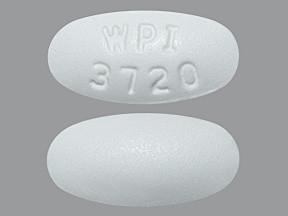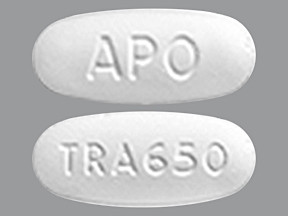TRANEXAMIC ACID 650 MILLIGRAM TABLET - ORAL
PHONETIC PRONUNCIATION: (TRAN-ex-AM-ik AS-id)
COMMON BRAND NAME(S): Lysteda
GENERIC NAME(S): tranexamic acid
Uses
USES: This medication is used to treat heavy bleeding during your menstrual period. Tranexamic acid works by slowing the breakdown of blood clots, which helps to prevent prolonged bleeding. It belongs to a class of drugs known as antifibrinolytics. Tranexamic acid is not a hormone. It does not treat other menstrual or pre-menstrual symptoms. It does not stop your period. It is not a form of birth control and does not protect against sexually transmitted diseases.
How to use TRANEXAMIC ACID 650 MILLIGRAM TABLET - ORAL
HOW TO USE: Read the Patient Information Leaflet if available from your pharmacist before you start taking tranexamic acid and each time you get a refill. If you have any questions regarding the information, consult your doctor or pharmacist. Take this medication by mouth with or without food as directed by your doctor, usually 2 tablets 3 times a day (morning, afternoon, bedtime). Swallow this medication whole. Do not crush or chew. Wait until your period has started before taking your first dose. Do not take tranexamic acid for more than 5 days in a row. Dosage is based on your medical condition and response to treatment. Do not take more than 3 doses (6 tablets) in 24 hours. Stop taking tranexamic acid and see your doctor right away if you have any eye problems or change in vision. Tell your doctor if there is a change in your bleeding pattern or heavy bleeding persists or worsens.
Side Effects
Precautions
Interactions
Overdose
Images

- color
- white
- shape
- oblong
- imprint
- WPI 3720

- color
- white
- shape
- oblong
- imprint
- TRA650, APO

- color
- white
- shape
- oblong
- imprint
- TRA650, APO

- color
- white
- shape
- oblong
- imprint
- WPI 3720

- color
- white
- shape
- oblong
- imprint
- WPI 3720
Reviews
Faq for TRANEXAMIC ACID 650 MILLIGRAM TABLET - ORAL
Tranexamic Acid is a medication that belongs to a class of drugs known as antifibrinolytics. It helps in the treatment of heavy bleeding by reducing the breakdown of clots in the blood.
Take Tranexamic Acid exactly as prescribed by your doctor. Usually, it is taken orally with or without food. Follow the dosage and frequency instructions given by your healthcare provider.
Common side effects of Tranexamic Acid may include nausea, vomiting, diarrhea, headache, muscle or joint pain, nasal congestion, and fatigue. If you experience any severe or persistent side effects, inform your doctor immediately.
It is important to inform your doctor about any known allergies before starting Tranexamic Acid. Although allergies to this medication are rare, it is best to discuss your medical history with your healthcare provider.
Tranexamic Acid should be used with caution during pregnancy. You should discuss the potential risks and benefits with your doctor before taking this medication while pregnant.
Tranexamic Acid may pass into breast milk in small amounts, so it is advisable to consult your doctor if you are breastfeeding. They will determine whether the benefits outweigh the risks and provide appropriate guidance.
It is generally safe to consume alcohol in moderation while taking Tranexamic Acid. However, excessive alcohol intake may increase the risk of certain side effects like dizziness or drowsiness. It is recommended to consult your doctor for personalized advice.
Tranexamic Acid may interact with specific medications such as hormonal contraceptives, blood-thinning drugs, or other antifibrinolytics. It is crucial to inform your doctor about all the medications you are currently taking to avoid potential drug interactions.
Apart from treating heavy bleeding, Tranexamic Acid is also prescribed for conditions like nosebleeds, hereditary angioedema, and abnormal uterine bleeding. However, it should only be used under the supervision of a healthcare professional.
Disclaimer
IMPORTANT: HOW TO USE THIS INFORMATION: This is a summary and does NOT have all possible information about this product. This information does not assure that this product is safe, effective, or appropriate for you. This information is not individual medical advice and does not substitute for the advice of your health care professional. Always ask your health care professional for complete information about this product and your specific health needs.

No Reviews Yet